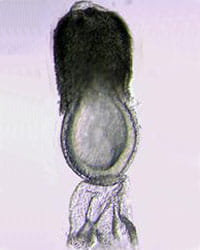Embryonic Development of Endoderm and Its Organs
Our research aims to identify how a simple sheet of undifferentiated endoderm is initially subdivided into presumptive organ domains and then assembled with mesoderm and ectoderm to form complex, functioning organs. To do this we employ an array of experimental model systems including chick, mouse and human pluripotent stem cells.
The molecular mechanisms that establish organ domains along the anterior-posterior axis.
One fundamentally important question is how are some endoderm cells directed to form the pancreas whereas other cells are directed to form the liver, stomach or intestines? We have identified several signaling pathways that act in a combinatorial way to establish presumptive organ domains.
From patterns to organs.
We have several projects that aim to understand how specific endoderm organs form and give rise to complex structures and cell types. Organs that we study include the esophagus, stomach, pancreas, bilary system, intestine and colon.




